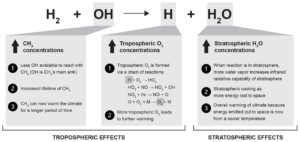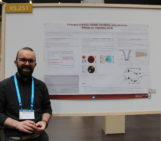
Around the world, the shift to hydrogen is being considered a key strategy to decarbonize the environment, with experts even calling it the fuel of the future. Hydrogen now features in all eight of the European Commission’s net zero emissions scenarios for 2050, promising to end our dependence on fossil fuels and reduce CO2 emissions across industries. So it comes as no surprise that billions of euros in new investments and financial subsidies are being proposed to speed up its global adoption.
Earlier this year, Simon Bennett, from the International Energy Agency (IEA) echoed hydrogen’s place in climate crisis mitigation by saying,
“You can’t escape the conclusion that hydrogen is part of the solution to get to net zero – and quite a significant part. That doesn’t mean an entirely hydrogen-based economy, but there is a sensible role for hydrogen in many sectors.”
New research tells a different story
In the last couple of years, research has begun to shine a light on another side of hydrogen: the fact that it is a short-lived gas in the atmosphere that is a very small molecule and thus tends to leak, causing global warming. And up until now, scientists say this warming impact of hydrogen is both widely overlooked and underestimated.
Now for the first time, researchers have evaluated the climate consequences of hydrogen emissions over all timescales. By combing through already published data, they examined the potency of hydrogen as a climate forcer, the net warming impacts from replacing fossil fuel technologies with their clean hydrogen alternatives, and the temperature responses to projected levels of hydrogen demand.
What they found may just make us pause and revaluate our climate change strategies: hydrogen emissions can considerably undermine the climate benefits of decarbonization strategies that involve clean hydrogen – especially in the immediate decades that follow its deployment.
In particular, the emission rate seems to play a big role in determining the scale of climate benefits or disbenefits. For instance, researchers found that green hydrogen applications with higher-end emission rates (10%) may only cut climate impacts from fossil fuel use by half over the first two decades, which is far from the perception that green hydrogen systems are climate neutral. However, over a 100-year period, climate impacts could be reduced by around 80%. On the other hand, lower-end emissions (1%) could yield limited impacts on the climate over all timescales. These findings are published in the EGU open access journal, Atmospheric Chemistry and Physics.
The fate of hydrogen in the atmosphere
This new research shows that hydrogen’s potency can be six times higher than commonly thought when looking at the next couple of decades. In terms of its near-term potency, the first estimates of hydrogen’s global warming potential (GWP) for a 20-year time horizon (GWP-20) yield a potency that is three times higher than its 100-year impact (GWP-20 = 33 [20–40].
The indirect warming effects of hydrogen can be better understood by examining its behaviour in the atmosphere. When it escapes into the atmosphere, hydrogen has two main fates: around 70-80% is removed by the soil through diffusion and bacterial uptake, and the remaining 20-30% gets oxidized by reacting with the naturally occurring hydroxyl radical (OH). It is this second step that proves to be more damaging for the environment: the oxidation of hydrogen in the atmosphere leads to increasing concentrations of greenhouse gases in both the troposphere and stratosphere. This process is illustrated in figure 1 below.
Could we limit hydrogen’s warming effects?
It’s clear that the near- and medium-term warming impacts of hydrogen emissions are far higher than widely perceived. These impacts, researchers say, should be quantitatively accounted for to maximize the climate benefits of replacing fossil fuel systems with hydrogen.
They recommend five key actions to minimize hydrogen’s warming effects and, in doing so, maximize its climate benefits in a future hydrogen economy:
- Advance research of hydrogen’s indirect radiative effects and temperature responses to hydrogen emissions by incorporating interactive emissions, chemistry, and radiation parametrizations in further coupled chemistry–climate models as well as reduced-complexity climate models
- Employ climate metrics and/or models that effectively reflect the role that hydrogen could play in meeting net-zero goals in the desired time frames – this means not exclusively relying on GWP-100 and potentially adopting a dual GWP-20/GWP-100 approach
- Improve quantification of hydrogen leakage rates by developing technologies that can be taken into the field to accurately measure hydrogen emissions at low detection thresholds (i.e., ppb level)
- Include the likelihood of hydrogen leakage and its impacts in decision-making about where and how to effectively deploy hydrogen – such as co-located production and end-use applications
- Identify leakage mitigation measures and best practices before building out infrastructure
In short, now is the absolute right time to examine hydrogen’s role as a ‘clean fuel’, invest in advancing the science of hydrogen’s indirect climate effects, and improve estimates of hydrogen emissions throughout the value chain. Minimizing leakage will be essential to the effectiveness of hydrogen as a climate change mitigation strategy. Moreover, given that it is possible to prevent leakage in some applications and easier to minimize hydrogen leakage when designing a system vs. retrofitting one, we have the rare opportunity to get ahead of this issue before the infrastructure and systems are widely deployed.





